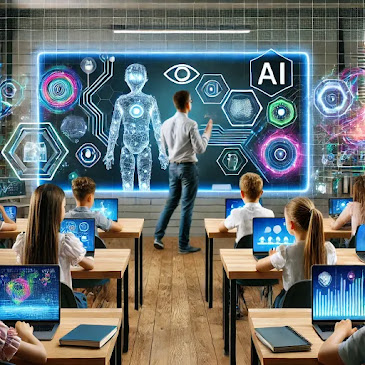In the fast-paced era of technological advancements, artificial intelligence (AI) has become an essential part of education, helping teachers enhance teaching quality and customize learning experiences to meet students' needs. This article explores some of the most prominent AI tools and their applications in the classroom:
1. ChatGPT and Google Gemini
ChatGPT and Google Gemini are powerful AI chatbots that offer accurate answers and advanced educational support. ChatGPT excels in generating clear and concise textual content, while Gemini enhances the experience by incorporating visual elements and useful links. These tools are ideal for supporting students' inquiries or assisting teachers in preparing lesson materials quickly and effectively.
2. Magic School AI
Magic School AI is a comprehensive platform that simplifies lesson planning, activity design, and assessments. It automates routine tasks like creating customized learning materials, worksheets, and administrative documents, saving teachers time and enabling them to focus on student interaction.
Gamma is a cutting-edge tool for creating smart presentations tailored to specific topics. It features a user-friendly interface and modern designs, enabling users to craft professional slides quickly. After selecting a topic, templates and styles can be adjusted to finalize the presentation for download.
4. VideoGen
VideoGen is a specialized tool for creating short educational videos using text or voice recordings. It simplifies presenting complex topics visually, enhancing student understanding and engagement.
5. Natural Reader
Natural Reader converts text into high-quality audio, making it valuable for supporting students with reading difficulties or preparing audio-based learning materials. Text or documents can be uploaded directly, generating speech in the desired language.
6. Runway
Runway is a video editing tool that allows users to add customized effects. It enables the upload of images or videos, the addition of text and sound, and the creation of visually appealing content suitable for lessons or activities.
7. Slides AI
Slides AI specializes in generating high-quality presentations powered by AI. This tool enables the creation of professional slides quickly and efficiently by entering a topic and selecting a preferred style.
8. Play HT
Play HT is a professional-grade text-to-speech tool. It allows users to choose voices and languages, making it ideal for creating audio resources that enhance educational experiences. Audio files can be downloaded and easily shared with students.
Open Art is an AI-based tool for generating educational images. Teachers can customize visuals by specifying styles and details, resulting in unique images that enhance lesson materials or activities.
The value of AI tools in education goes beyond improving efficiency; they also demand a fundamental shift in teaching and assessment practices. Traditional rote-learning methods are no longer sufficient in a technology-driven era. Education must focus on equipping students with 21st-century skills like critical thinking, creativity, collaboration, and problem-solving.
AI tools not only enrich learning experiences but also support transitioning from knowledge recall assessments to evaluations that measure students' ability to analyze, innovate, and apply their learning in real-world contexts. By leveraging these tools, educators can foster a generation of students who are well-prepared to meet the challenges of a rapidly evolving digital world.
